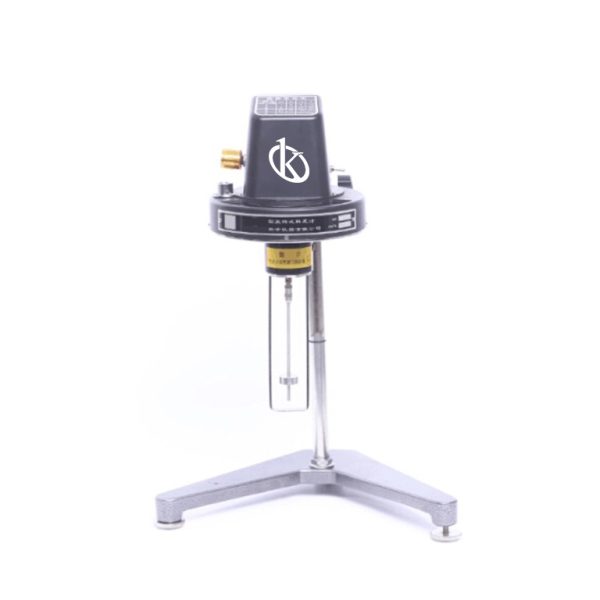A viscometer is a device used to measure the viscosity of fluids. These measurements can be useful when designing products or improving industrial processes. These measuring devices can be found in a variety of situations, from measuring the viscosity of automotive oils to measuring the viscosity of a fluid to validating a food product as it goes through an industrial process. The most commonly used viscometer is the capillary viscometer.
Generally speaking, there are four principles used to measure the viscosity of fluids: the capillary viscometer, the rotational viscometer, the cylindrical-perpendicular viscometer and the metal film viscometer. The principle used in all these devices is the same: they measure the resistance or retardation due to the viscosity of a fluid passing through a tube.
How do capillary and rotational viscometers work?
The capillary viscometer is the most commonly used viscometer. It is designed to measure the viscosity of liquids at low temperatures. It consists of a glass tube that is filled with liquid and then bounded by a rod. The rod measures the amount of time it takes for the liquid to pass between two previously established marks. The result is known as the flow time, which is compared to a reference table. This table contains ready data for a wide variety of liquids at different temperatures.
The rotational viscometer is another device used to measure the viscosity of fluids. It consists of a rotor with a specific weight and a rotating disk. The liquid is placed in a container and the motor shaft is rotated. The spin created causes the liquid to flow around the disk. The drag force of the liquid determines the speed at which the rotor accelerates on a scale measured in centipoise (cP).
How do cylindrical and metal film viscometers work?
The cylinder-perpendicular viscometer is used to measure the viscosity of liquids at high temperatures. It consists of a cylinder with a clamp at one end. The liquid is placed in a vat and an additional force is applied to it through the clamp. The time it takes for the liquid to leave the cylinder is measured with a stopwatch and the results are compared with a reference table. This table contains a variety of data for liquids at different temperatures.
Finally, the metal film viscometer is used to measure the viscosity of corrosive liquids at high temperatures. It consists of a vat with a metal membrane inside. The liquid is introduced into the vat and heat is applied. The pressure of the liquid will cause the membrane to deform, and its deformation is measured with a specialized micrometer. The results are compared with a reference chart to determine the viscosity of the liquid.
Let’s learn how to use viscometers
First, choose the type of viscometer you need to use for the fluid in question. This depends on the fluid you want to measure, the temperature at which you want to use it, and the fluid flow rate required to use each specific type. Be sure to determine these specifications before selecting your viscometer. Once you have selected your viscometer, prepare it for use. This includes calibrating the viscometer to ensure that the measurement is accurate. For most devices, this means filling the device with the liquid to be measured and adjusting the temperature to ensure that the correct temperature is used to provide accurate results.
Next, adjust the measurement parameters according to the manufacturer’s specifications. This will include the force applied to the tube (if it is a metal filament viscometer) and the rotational speed (if it is a rotational viscometer). This is a key part of getting accurate measurements. Once you have set all the parameters, put on your safety equipment, such as goggles and gloves, and take the measurement. Following the manufacturer’s instructions will help minimize general errors, such as misreading the information displayed on the digital display.
What to do after the measurement is finished?
Finally, write down the results of the measurement. This may include temperature, pressure, viscosity and other relevant data. It is always useful to save the data if you need to make future comparisons to see if any factors have changed. If the readings are not as specified, it is important to check the parameters to ensure they are set correctly and re-take the measurement.
Once you have finished measuring with your viscometer, clean all of the equipment to ensure that the equipment remains in good condition. This will include disassembling the device according to the manufacturer for longer life of the internal components. In conclusion, the use of a viscometer is essential for measuring the viscosity of fluids for various industrial uses.
When using a viscometer, it is important to know the basic operating principles of each type of device to ensure accurate measurements. The four common principles for viscosity measurement are the rotational viscometer, the capillary viscometer, the cylinder-perpendicular viscometer and the metal film viscometer. Once you have found out which are the best parameters for the fluid in question, set the equipment and perform the measurement, and always save the data for future comparisons.
The use of viscometers from the manufacturer Kalstein
Among the models that Kalstein has for sale is the Industrial Digital Laboratory Viscometer YR05857 – YR05858. This equipment is designed to measure viscosities up to 6 million cps with an accuracy close to 2$. To purchase this or any other model, and to inquire about prices, please visit our web sites HERE and HERE.

